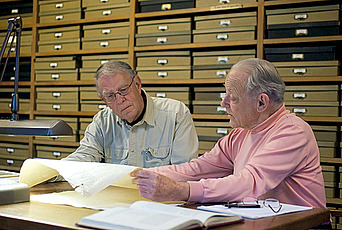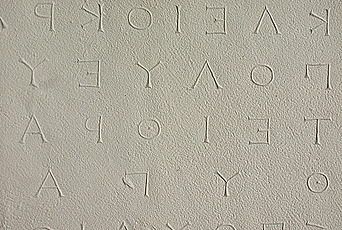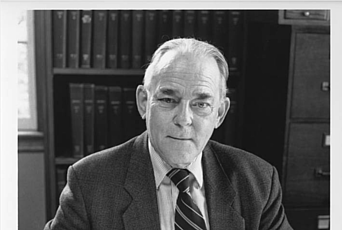IAS Receives NEH Grant for Squeeze Digitization Project
Press Contact
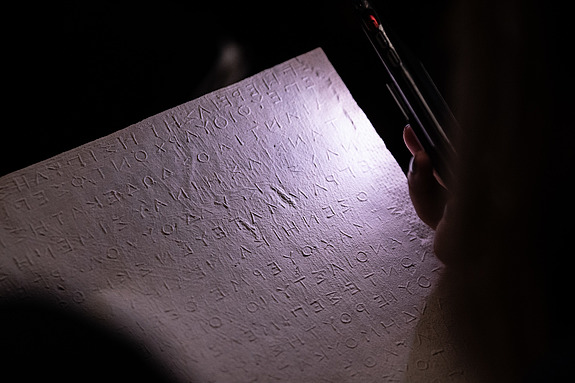
The National Endowment for the Humanities (NEH) has awarded the Institute for Advanced Study a three-year grant of $350,000 to complete digitization of one of the world’s largest squeeze collections. The project will establish worldwide open access for more than 30,000 paper squeezes—the physical imprints of stone inscriptions—that are crucial to an understanding of the ancient world.
“The immense epigraphic resources of the Institute have played a major role in advancing our understanding of the ancient Greek world,” stated Aaron Hershkowitz, Project Coordinator. “With the support of the NEH we will be able to invite the entire world into our collection, and we eagerly look forward to new eyes making fresh discoveries.”
The Project Director, Angelos Chaniotis, Professor of Ancient History and Classics in the School of Historical Studies, stated, “This grant enables the Institute to provide free access to its epigraphic resources to researchers and students of Classics, Archaeology, and History worldwide.”
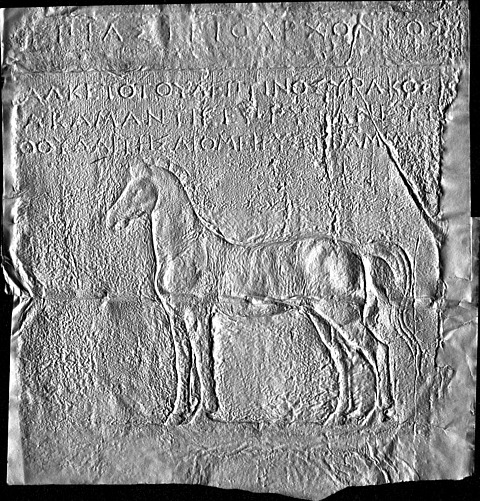
The IAS collection is one of the largest in the world. It contains approximately 30,000 squeezes of Greek and Latin inscriptions that cover every aspect of political, social, economic, religious, legal, and cultural life in the broader Greek world from ca. 400 B.C.E. to ca. 400 C.E.
The size and content of the IAS collection are well known among scholars of the ancient world, but until the recent launch of the IAS’s squeeze digitization project, the squeezes could only be viewed in person. The publication of the collection will allow a far broader range of users to test their questions and theories against the data contained in the collection. The IAS has partnered with institutions and communities around the world to share information, ensure transparency across epigraphical databases, and broadly disseminate new material.
The study of inscriptions has been a primary focus of historians at the IAS since the time of epigrapher Benjamin Dean Meritt, who started building a repository of squeezes immediately after his appointment to the Faculty in 1935.
To learn more about the project, visit the IAS Krateros website.
The Krateros Project gratefully acknowledges the support of the Charles and Lisa Simonyi Fund for Arts and Sciences, as well as additional generous support made in memory of Fowler Merle-Smith.
About the Institute
The Institute for Advanced Study is one of the world's foremost centers for theoretical research and intellectual inquiry. Located in Princeton, N.J., the IAS is dedicated to independent study across the sciences and humanities. Founded in 1930 with the motto "Truth and Beauty," the Institute is devoted to advancing the frontiers of knowledge without concern for immediate application. From founding IAS Professor Albert Einstein to the foremost thinkers of today, the IAS enables bold, nonconformist, field-leading research that provides long-term utility and new technologies, leading to innovation and enrichment of society in unexpected ways.
Each year, the Institute welcomes more than 200 of the world's most promising researchers and scholars who are selected and mentored by a permanent Faculty, each of whom are preeminent leaders in their fields. Comprised of four Schools—Historical Studies, Mathematics, Natural Sciences, and Social Science—IAS has produced an astounding record of introducing new understanding and is responsible for undeniable progress across disciplines and generations, from the development of one of the first stored-program computers to the establishment of art history as a discipline in the United States. Among its present and past Faculty and Members are 34 Nobel Laureates, 42 of the 60 Fields Medalists, and 19 of the 22 Abel Prize Laureates, as well as many MacArthur Fellows and Wolf Prize winners.
